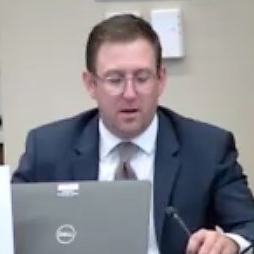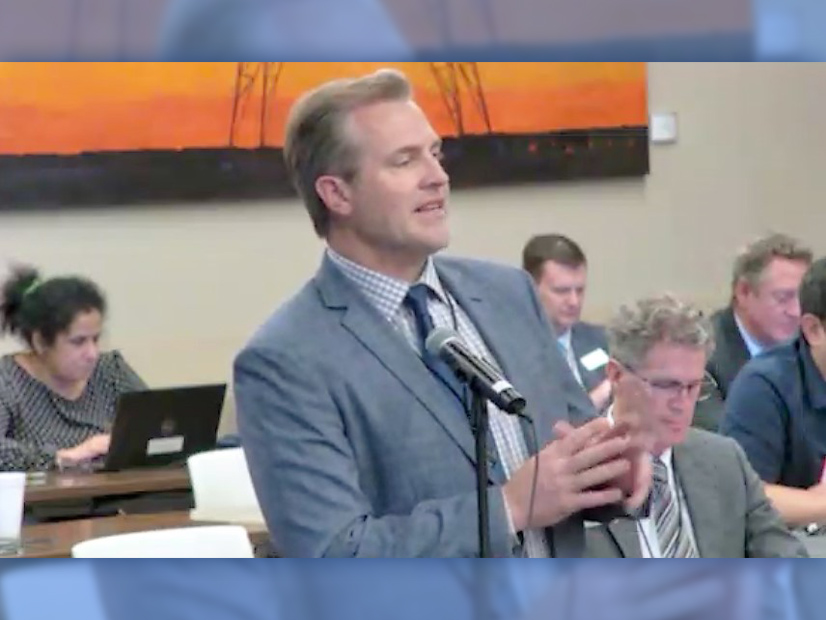SPP’s effort to improve its congestion-hedging processes appears to be gaining traction with its stakeholders, thanks to a recommended hybrid approach that first focuses on equitably allocating congestion rights instruments and then increases the pool of awards available.
Staff presented its proposal to SPP’s Markets and Operations Policy Committee Oct. 11 and then again last week during the RTO’s quarterly joint stakeholder briefing, which stretched over two days. They were expected to bring a final recommendation to the board but asked that a vote be delayed until the directors meet again in January. (See SPP Markets and Operations Policy Committee Briefs: Oct. 10-11, 2022.)
In setting the stage for Day 2 of the discussion, COO Lanny Nickell used a mixed metaphor to explain staff’s two-part proposal to improve congestion hedges.
Nickell said that aligning the models will require five or six different changes on the process’ market-design side and then modifying transmission planning.
“I see those two things working together as one; we’re trying to create better balance, more equity on the market side and then increasing the amount of congestion hedges that might be available,” he said.
“Think about this as being a big pizza pie. Today, on the market side, you get one bite at the apple. We take the whole pie, we throw it out, the ravenous wolves all come charging in and they’d get as much as they can get, but there’s always somebody left hungry,” he said.
“Instead of throwing out the whole pie and letting the hungriest and the biggest do whatever they can to get as much as they can, let’s split that up into five different pieces. Let’s throw out a piece at a time. Everybody comes in and gets what they can, and you throw out the next piece, the theory being that by splitting things up into multiple pieces and giving people multiple chances, you’re more likely to have nobody left hungry. What we’re trying to do on the transmission side is increasing the size of the pie so that the pieces you throw out are even bigger than what they were before.”
“I understand this better. It’s not perfect, but I don’t know anyone that gets everything they want out of the [current] process,” Nebraska Public Power District CEO Tom Kent said.
“I think the staff has come up with a pretty unique and creative solution to the problem,” American Electric Power’s Richard Ross said. As chair of the Market Working Group, Ross has overseen several years of stakeholder efforts to address the situation.
“I think AEP is probably going to be close to neutral as an overall portfolio,” he said, “but the important thing is this aligns the congestion instrument with the congestion cost so that folks can see things and secure things directly rather than having to rely on the slush bucket at the end to hope they get fulfilled. This is doing something different … and it’s a pretty creative idea.”
If handled properly, Ross said, the improved process will help wind-rich utilities export their excess power out of the region, a recurring topic over the past few years.
EDP Renewables’ David Mindham said his company has struggled to gain auction revenue rights. He said congestion costs of $70/MWh have hampered wind developers’ ability to send power eastward to other regions.
“To put [it] in perspective, the cost of exporting that energy is two to three times the levelized cost of actually selling that generation to an entity outside of SPP,” Mindham said. “There’s no hedge for us. I think I can speak for the [wind energy] industry when I say none of us are even considering another export deal until this is fixed. It’s just it’s way too expensive.”
“What [staff] has advanced is a fairly comprehensive and solid concept in terms of moving forward,” Board of Directors Chair Larry Altenbaumer said. “We still need to work through the stakeholder process. This is not a final product here. There’s work to be done, but I do believe from my standpoint that it is responsive to the path forward that I was looking for anyway.”
JTIQ Studies to Replace AFS Studies?
Antoine Lucas, SPP’s vice president of engineering, said staff’s work with MISO to unclog interconnection queues and facilitate transmission along the RTOs’ seam could replace SPP’s affected system study (AFS) process.
The studies are conducted to determine whether generators seeking to interconnect in one RTO require transmission upgrades on the other side of the seam.
Lucas said the joint targeted interconnection queue study benefits will improve cost certainty for the RTOs’ generator interconnection requests, provide interconnection customers with AFS costs before cluster studies, and eliminate unknown AFS network upgrades and AFS study costs.
“We’re looking to use this process as a springboard into replacing the affected system studies. This aligns with where the industry is heading and also optimizes upgrades along the seam,” he said. “Rather than a [generator interconnection] customer identifying the interconnection and then upgrades made from bottom up, we would step back and look at an optimal set of projects.”
RSC Membership Turnover
The Regional State Committee honored several departing members during its Oct. 24 business meeting, including its longest-serving state regulator, Oklahoma Corporation Commission Chair Dana Murphy. A former RSC president, Murphy has been on the committee since 2011.
 Incoming RSC president Andrew French, KCC | SPP
Incoming RSC president Andrew French, KCC | SPP“Eleven years of time — you just blink your eyes and then it’s gone,” Murphy said. She will be replaced by the OCC’s Todd Hiett.
Jefferson Byrd, who is running for land commissioner in New Mexico, is also stepping down. Ted Thomas previously stepped away after resigning from the Arkansas commission. (See Arkansas PSC’s Thomas Makes Way for His Successor.)
The RSC also approved its Nomination Committee’s choices for next year’s officers. Kansas’ Andrew French will succeed Randel Christmann as president, with Iowa’s Geri Huser serving as vice president and Texas’ Will McAdams as secretary and treasurer.
In other actions, the committee approved:
- RR497, which installs as a business practice the Project Cost Working Group’s oversight for applicable transmission projects that are funded through direct assignment of cost;
- RR499, which adds new language to the planning criteria concerning terminology and their definitions, new capability and new operational testing requirements, out-of-season capability testing, capability and operational testing for new or upgraded units, and accreditation for thermal and hydro units;
- RR508, which allows load-responsible entities to use deliverable capacity in meeting their winter season obligation;
- RR516, which codifies the increase in SPP’s planning reserve margin from 12% to 15%.
The RSC also approved a clean audit of its 2021 financial statements.
SLC Pancaking Strawman Still in Flux
Murphy, who leads the RSC’s representation on the Seams Liaison Committee, a joint group with the Organization of MISO States to develop coordinated seams policies, reviewed with the committee an SLC working group’s proposed strawman for rate pancaking.
The Rate Pancaking Working Group in August listed several recommendations for treatment of unreserved use charges and emergency ties on the RTOs’ seams, improving the ability to obtain congestion hedges for procuring firm transmission, eliminating or reducing rate pancaking for long-term contracts, and eliminating interregional projects could cause unintended rate pancaking issues from interregional projects. (See MISO, SPP Regulators Finish Pancaking Strawman.)
Murphy said her SLC co-chair, Missouri’s Ryan Silvey, updated the OMS in September and requested feedback from the commissioners. She said he had not received that input when she last talked with him in October.
The SLC meets again on Nov. 21.


